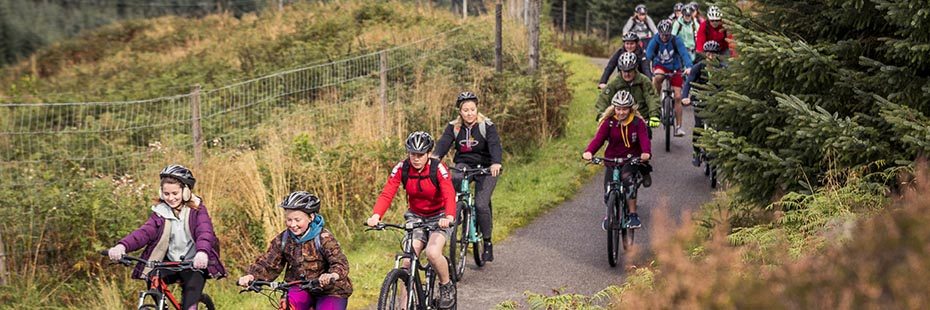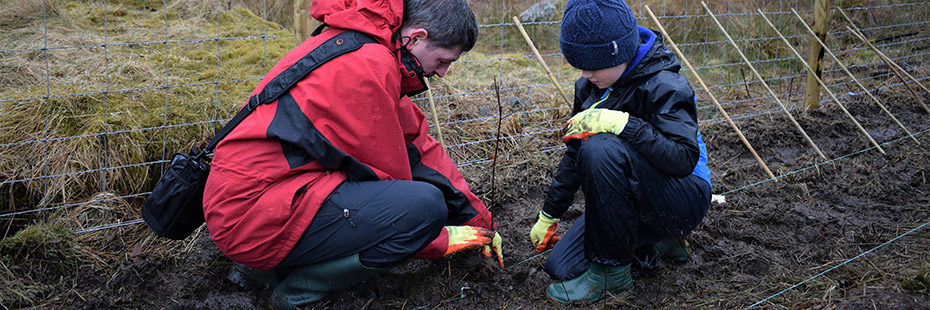
Reducing your impact on the National Park
Whether you live or work in the National Park, are visiting for the day or exploring for longer, or here on a study visit, there are ways that we can all reduce our impact on the National Park and take action against the climate emergency.
For visitors
Travel wisely
Reducing your impact on the National Park starts before you even arrive. By choosing public transport, such as the train or bus, you’ll reduce your emissions significantly. There are two key train lines through the Park, with direct lines straight from Glasgow and a number of national coach and local bus links, which you can find more information on through our getting to the Park advice. You can even access some of our most iconic munros by public transport.
There is a growing number of electric vehicle charging points across the Park, which you can see mapped at ChargePlace Scotland so you don’t have to worry if you’re driving or have hired an electric car. If you have to come by car, then consider whether you can (assuming it’s safe to do so in line with COVID-19 restrictions at the time) car share with a couple of friends.

Consider cycling
Once you’re here, consider the way you get around. There are a number of great walks that allow you to take in all of the scenery without your car. Or if you’re feeling a bit more adventurous, bringing your bike or hiring one will allow you to travel even further round the National Park. The Loch Lomond & The Trossachs Countryside Trust have mapped out a number of e-bike routes that you might like to explore on one of their e-bikes.
Ditch the disposables
Did you know that a massive four-fifths (80%) of Scotland’s carbon footprint comes from all the goods, materials and services which we produce, use and often throw out after just one use?
The items that we choose to use (or reuse!) make a real difference, along with how we dispose of them. You’ll already know that littering isn’t acceptable in the National Park. There are a number of other ways to reduce the waste associated with your visit, from bringing and refilling a reusable water bottle to investing in a tent that will last you more than one night. Even better if it’s made out of recycled single-use plastic!
Consider volunteering

Tree planting
If you enjoyed your visit to the National Park, why not consider volunteering with us or our partners? Our volunteers carry out a huge range of practical conservation work that directly improves the National Park’s resilience to climate change. From tasks that help to mitigate climate change, such as tree planting, to actions that help the National Park’s environment to adapt to changing weather, such as river conservation tasks, volunteers already have had a significant positive impact here in the Park.
For communities
Communities across the National Park are already taking action against the climate emergency, with a number recently gaining funding through the Community Climate Asset Fund to take forward food growing and waste reduction projects.
Through our grants scheme, we support a number of communities in the National Park active against the climate emergency. In 2020/21, our grants were awarded specifically to those who showed they were helping to deliver a green recovery from the COVID-19 pandemic, including an outdoor classroom, invasive species removal, path upgrades, community garden work & biomass heating system installation.
For businesses
Our Business in the Park hub offers lots of tools and opportunities to develop and grow your business, including new guidance on making your business greener.
For learners
For an accessible, hands-on learning experience, check out our peatlands learning activity. With just a couple of items, you’ll be able to make your own mini bog and learn about how bogs or peatlands are our friends in fighting climate change.
If you want to dive deeper, our Climate Change Education Pack has been designed to give a fuller overview of the impacts of climate change including the key environmental threats, and outlines the role of the National Park in mitigating the climate emergency. It includes case studies which can be used to aid learning, with one specifically exploring the importance of restoring peatlands, one of our most significant carbon sinks.
For anyone involved in delivering climate related education, please speak with us about how we can provide a wide range of other National Park support to you. From travel grants, to kit libraries, we can help – just get in touch.
For land managers
From advice on sustainable land management, through to grants on taking action on your land to mitigate the climate emergency, such as tree planting, our Land Management pages provides a summary of the support we provide to land managers across the National Park

